Marine existence is complex.
Sea snakes have managed to overcome the challenges of living life underwater with unique adaptations. At a glance, you might confuse them with eels. It’s an easy mistake; both animals have long bodies and stealthy hunting skills. However, these marine creatures are complete opposites.
Read on to understand the differences between a sea snake vs eel.
Comparing Sea Snake vs Eel
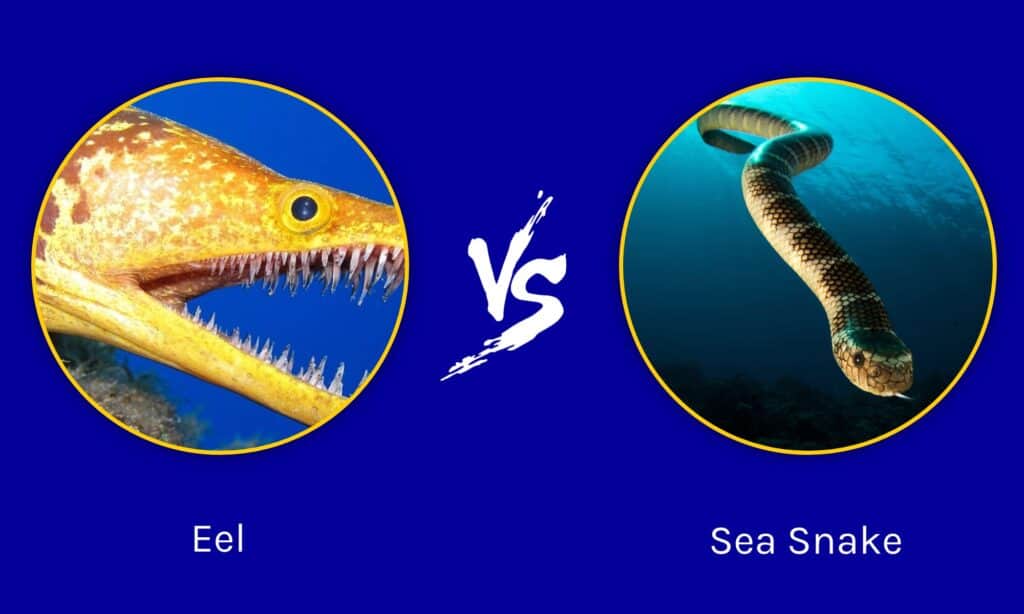
| Sea Snake | Eel | |
| Reproductive cycle | Certain species lay eggs on land Certain species lay eggs within their body Temperatures influence the reproductive cycle | Many unknowns (especially with freshwater eels) |
| Diet | Carnivore Eats eels | Carnivore |
| Anatomy | Adapted marine muscles terrestrial snakes lack Scales that don’t overlap Can grow past 10 feet with some species | Usually scaleless Certain species have microscopic scales American eels stop growing at 6 feet |
| Habitat | Oceans, excluding the Atlantic | Freshwater Saltwater Brackish water |
| Social behaviors | Solitary Mysterious large groups sometimes swim together | Solitary Cooperatively hunt with grouper fish |
Sea Snake vs Eel: Key Differences

Sea snakes love hunting in the coral reefs.
©Rich Carey/Shutterstock.com
The key difference between a sea snake vs eel is that sea snakes don’t have gills while eels are fish. In addition, they have reproductive, diet, and other anatomical differences.
It’s still a mystery how certain eels like freshwater eels reproduce. However, sea snakes have clearly understood and well-researched reproductive cycles. Certain sea snakes come up on land to lay their eggs. Others evolved to hatch their eggs inside of their bodies!
Both sea snakes and eels are carnivores. However, while eels focus on eating frogs, fish, and dead organisms, sea snakes have an enormous appetite. One of the sea snakes’ favorite things to dine on is eels themselves!
Anatomically, sea snakes have special abilities that their relatives don’t. They have particular muscles that can close their nostrils, and their tails are shaped like paddles. They also have scales. Alternatively, eels are usually scaleless. There are species of eels with microscopic scales, but they’re barely noticeable.
Both animals love living in the water, but you won’t find any sea snakes in the Atlantic ocean. There are plenty of eels in the Atlantic Ocean, though!
Large groups of sea snakes can be spotted swimming together through the ocean. So many sea snakes can be in a single group that is miles long. But this is a rare occurrence. Eels don’t have a social structure and prefer solitary lives.
Keep reading to understand all of the differences between a sea snakes and eels.
Sea Snake vs Eel: Reproductive Cycle
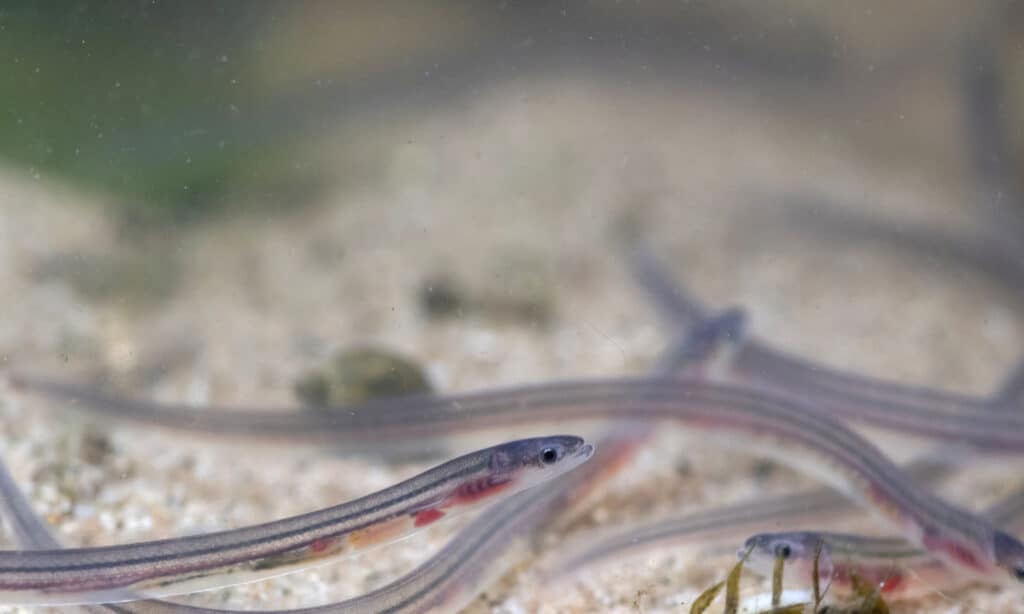
It’s a mystery how eels reproduce.
©jack perks/Shutterstock.com
Sea snakes comprise two subfamilies of the cobra family. There are the Hydrophinae and the Laticaudinae. Both of these families spend their entire lives in warm tropical seas. However, Laticaudinae still has to go ashore to lay their eggs. The Hydrophinae are ovoviviparous, giving them the unique ability to hatch eggs inside their body.
What about eels? It’s unclear how eels reproduce. No one knows for sure if they lay eggs, fertilize them in mid-air, or somehow use the help of mud when reproducing. Eel reproductive cycles have been a mystery since before Artistotle’s time.
However, it should be noted that scientists studying this issue have recently found large areas that are believed to be spawning grounds. The current scientific belief is that males fertilize free-floating eggs.
Sea Snake vs Eel: Diet
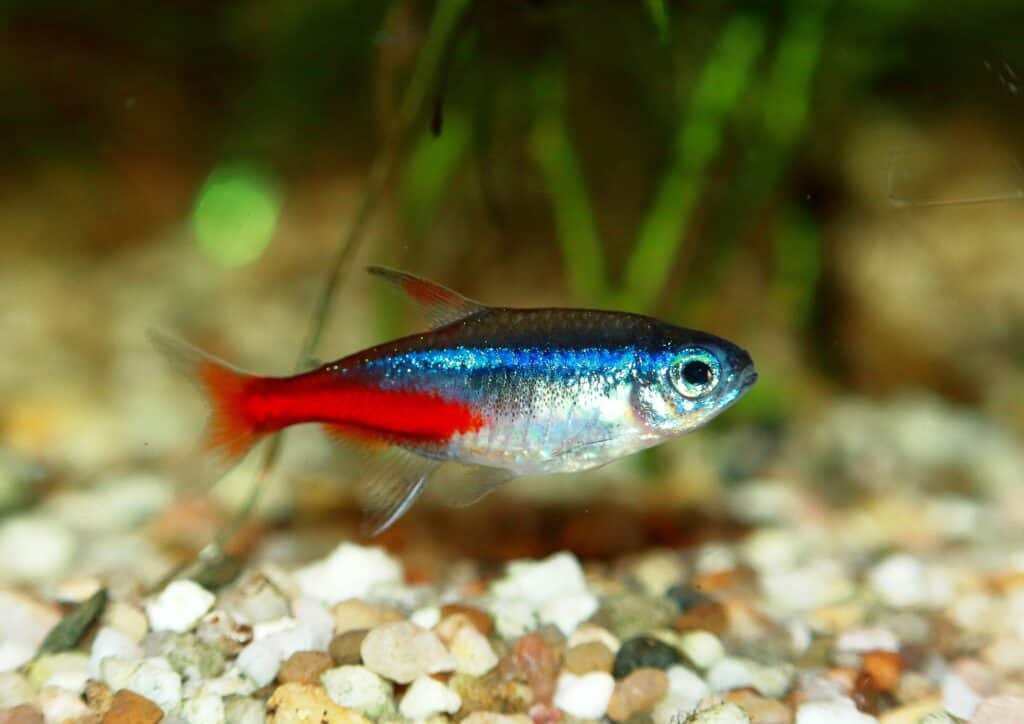
Sea snakes and eels are carnivores that eat fish.
©Kristiana Berzina/Shutterstock.com
No matter what the species is, all sea snakes eat fish. This includes the species that live in coastal waters and estuaries. Sea snakes feed on fish, and one of their favorite fish to eat is eels. Certain sea snakes specialize in eating fish eggs, while others focus on consuming marine invertebrates.
True eels are opportunistic eaters, unlike electric eels, who always seek out their prey. Opportunistic feeders eat almost anything that crosses their path.
Eels are also carnivores. On average, an eel might eat frogs, fish, and dead organisms. Since they actively hunt at night, eels spend the day in crevices waiting for prey to come by. The eel can lunge out of its crevice as a fish passes and swallow it whole.
Sea Snake vs Eel: Anatomy
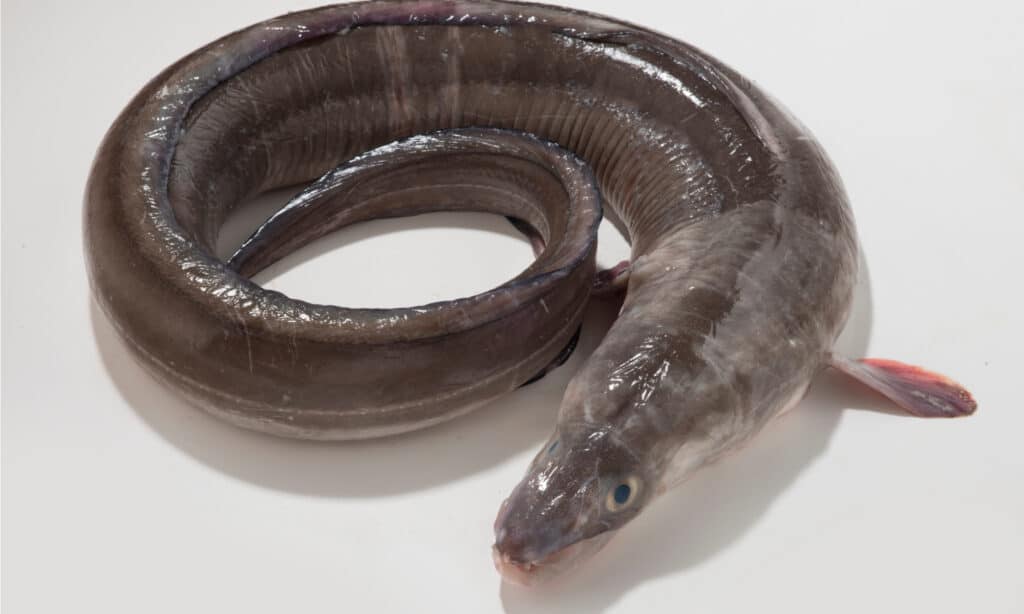
Eels are fish, but they don’t have pelvic fins.
©JoaoSilvaB/Shutterstock.com
Sea snakes have unique adaptations to survive their marine habitats. They can close their nostrils using valvular muscle arrangements. They also have advanced control over their lingual fossa or tongue notch. Their tails also have a compressed paddle shape to swim quickly through the water.
Most sea snakes lack the enlarged ventral scales that terrestrial snakes use to move about.
They have scales, but they’re not the same scales you’d find on land snakes. Sea snake scales are small and don’t overlap–they fit like puzzle pieces.
Alternatively, the body of an eel is usually scaleless. Some species, like the North American freshwater eel family, have microscopic scales. Other eel types, such as conger and moray eels, lack scales completely.
Eels have elongated worm-like bodies without any pelvic fins. Eels generate waves that travel the length of their entire body to move through the water. When they want to move backward, they simply reverse the direction of the wave.
A lot of the eel species don’t have any pectoral fins either. However, there are species with a long dorsal fin. The dorsal, anal, and caudal fin helps identify the individual eel species. For instance, moray eels have a mohawk-like dorsal fin that runs down the length of their body.
Sea Snake vs Eel: Habitat
Sea snakes live throughout most of the tropical parts of the Pacific Ocean. There aren’t any sea snakes in the Atlantic Ocean. However, you can find plenty of sea snakes roaming from the Cape of Good Hope through the Indian Ocean. They’re also found around the Indonesian Archipelago to Northern Australia.
More or less, sea snakes are usually restricted to coastal waters. One species crosses the Pacific and can be found along the west coast of tropical America. Pelamis platurus, a yellow-bellied sea snake, is the widest-ranging species of sea snake. The yellow-bellied sea snake is considered a pelagic animal. Pelagic fish and animals live in the pelagic zone of the water–neither close to the shore nor super deep.
Unlike sea snakes, you can find eels in the Atlantic Ocean. There are healthy populations of American eels throughout the Western Atlantic ocean. You can also find eels in rivers, estuaries, and other bodies of water. In Florida, you can find eels in brackish and freshwater. They’re also plentiful throughout the Atlantic and Gulf of Mexico drainages.
Sea Snake vs Eel: Social Behaviors
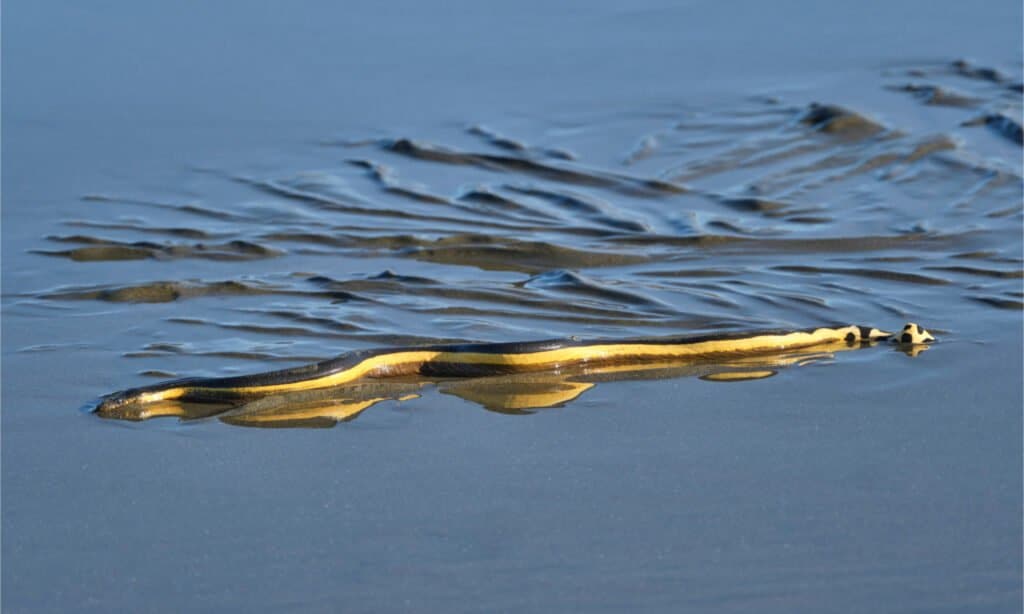
Sea snakes are usually solitary swimmers.
©John Fader/Shutterstock.com
Sometimes colossal groups or shoals of sea snakes can be sighted. These shoals can be miles long and usually consist of a single species. It’s still a mystery why large amounts of sea snakes can be found swimming together. It’s more common to see sea snakes by themselves floating on sticks.
Eels like to hang out by themselves; they’re solitary creatures. Seeing more than one eel in a rock crevice or coral space is rare. However, some species, like adorable garden eels, live in large colonies.
Moray eels can be social hunters. But not with other eels; they’re social with other fish. That’s right; eels use fish to hunt fish. They team up with grouper fish to flush out smaller prey.
The photo featured at the top of this post is ©
Thank you for reading! Have some feedback for us? Contact the AZ Animals editorial team.






